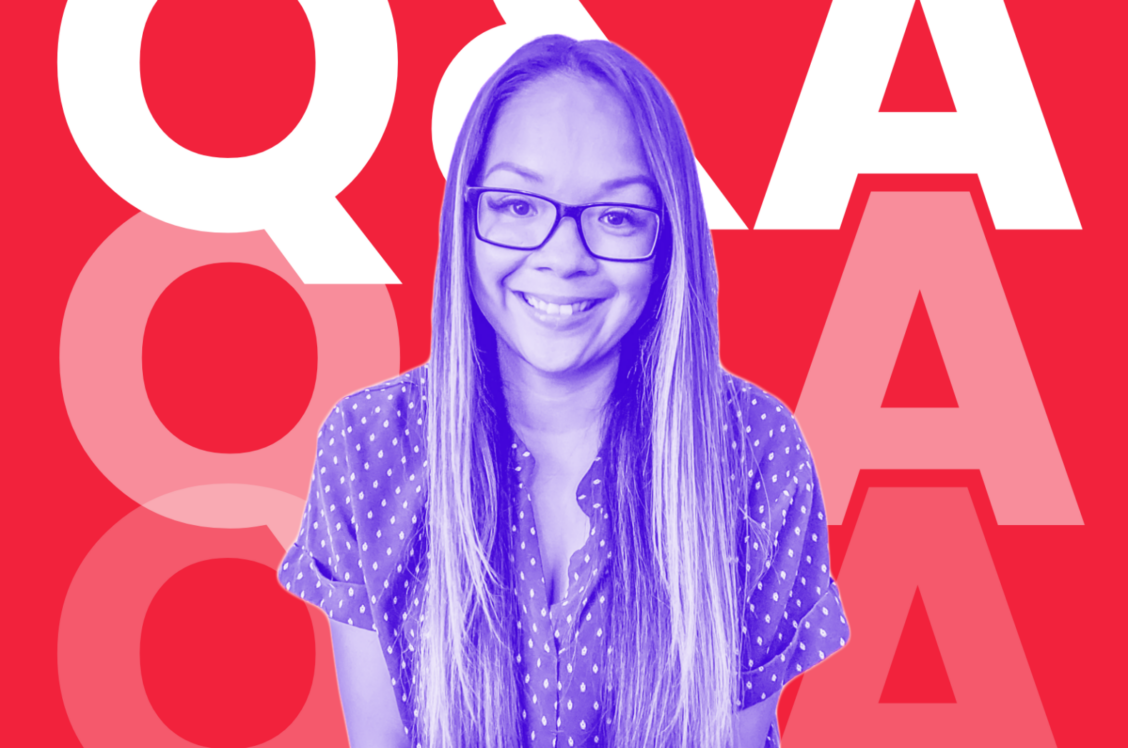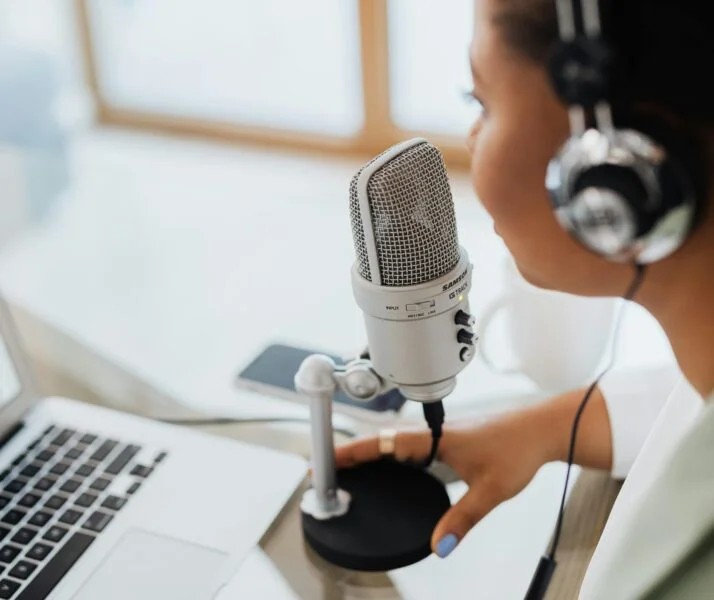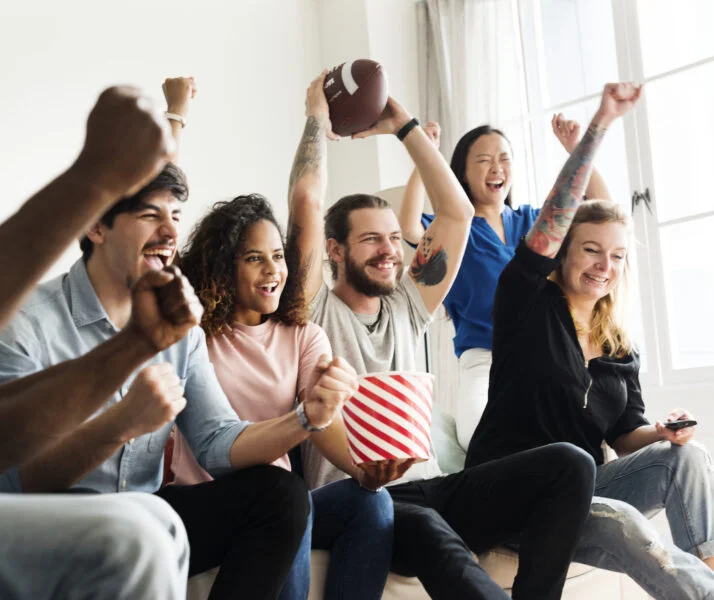Podcast News Daily Q&A: Ad Results Media’s Patty Mertes On Q4 Ad Trends

The podcast industry is now in the final months of 2021 and how the coming fourth quarter develops will determine whether forecasts that this will be the billion-dollar revenue year for the industry come to fruition. Podcast News Daily caught up with Patty Mertes, VP of Media at Ad Results Media – which has placed more than $2 billion worth of audio buys during the past two decades – to talk about how the fourth quarter looks and more.
Industry Outlook and Growth Expectations
Podcast News Daily (PND): As we head into 2021’s homestretch, how do things look?
Patty Mertes: We are ending the year very strong here at Ad Results Media. Without a doubt podcast, spending continues to grow. And we’re on pace to surpass that billion-dollar mark for the first time ever. So it’s very exciting going into Q4. The outlook is strong and positive. There are lots of interesting things coming out of more brands, and podcasts are piquing the interest of more advertisers.
PND: How does ad spending look compared to a year ago?
Patty Mertes: I can’t say the exact numbers, but it’s definitely higher year over year. But for us, podcasting is just the tip of the iceberg. It’s one of the many audio channels that we purchase. So while the podcast boom really is putting audio back on the map, and really having this big spotlight on audio in general, we’re utilizing other channels as well – streaming, Clubhouse, and even terrestrial radio. So it really is a more holistic view of all of audio with podcast leading the pack.
Buying Trends and Strategic Planning
PND: Are brands buying any deeper, instead of buying the top 50 podcasts perhaps they’re going top 100 or even further?
Patty Mertes: I think the advantage we have here is that Ad Results Media is a pioneer really in matchmaking in this space. We do look at rankers. What we have is over 20 years of results. So historical performance and data that we leverage more so than rankers. The way we buy is really weighted more on what we’ve seen perform with other similarly-targeted audiences. It gives us an edge as far as being able to utilize that as a planning tool and making sure that we still deliver.
PND: Because of the performance nature of what you guys do, it is probably a little different, right? It’s less about spots and dots and more about the results.
Patty Mertes: We have hybrid clients that look at both branding metrics, as well as performance, but at the end of the day, all our campaigns are effective, efficient, and measurable.
The Role of Video and Emerging Formats
PND: Any campaigns running in Q4 that have caught your eye?
Patty Mertes: I am definitely seeing a lot more podcasts that have the video component. So being able to not only get impressions for the listening experience, but also through the visual experience through YouTube is showing a lot of success. We are testing that out more this year. So I think Q4 is going to have more of that. A lot of our bigger brands are also doing more branded content. So going outside of just that host-read and being able to sponsor episodes or some segments. I think it’s very interesting.
PND: When a podcast has video are they more likely to get a bigger share or better CPM?
Patty Mertes: The CPMs are the same; the hard part is being able to track the video impressions. With our attribution partner, we’re able to track all pixel attributed podcast shows, but with the YouTube component, we’re just believing what the show is selling it at. As far as video impression, pricing doesn’t usually change. But we are able to calculate that video impressions, along with the audio impressions, to have more scale. That has usually performed, especially if it’s a good host that can really engage both on video and on audio.
PND: Does video reach the same person or they’re reaching a different audience?
Patty Mertes: There are probably different listeners that are consuming each medium differently. I think some listeners prefer to have that visual component versus those who are okay with just having it on their phone. Obviously, if you’re driving in the car, which is probably still the most consumed way for listening to a podcast, while you’re on your commute, you’re most likely going to listen to it versus if I’m sitting here at my desk, and I could just pop up a YouTube channel, and listen to it that way and be able to have some visual components.
PND: From an advertising viewpoint, is it a podcast if there’s a product sitting next to a podcast host in a video?
Patty Mertes: It’s a technicality because, honestly, the reason Ad Results Media is so successful is that we believe it is not necessarily just podcasts, we believe in the power of storytelling. We believe in the power of content. So being able to really leverage the host whether they’re on a video screen or even local radio and be the matchmakers and build that authentic relationship with the consumers. So that’s really what we leverage versus “Is it a podcast? Is it not?” For us, it’s, if you’re listening to it, it’s in the audio space, and it’s a storytelling that is engaging, then we’ll buy it.
PND: Since you also buy local radio, do you think local radio, especially morning shows, should do more video to stay competitive?
Patty Mertes: I can’t see how it’ll hurt them. However, it’s a tough market out there. There are so many YouTube channels, there are so many videos. So it’s just a matter of being able to really have a social media presence for them to see any impact. With local radio, I think the power there is really being able to connect locally. You can’t get that when you’re doing a podcast. I don’t see a lot of growth in local radio, but it’s still part of our media mix because there’re still some markets and some products and some brands that do really well and perform really well in certain key markets.
Future Challenges and Opportunities in Podcast Advertising
PND: Ad Results Media is working on a brand safety index. Can you talk about the need for one?
Patty Mertes: I think that’s just the next evolution of podcasts, being able to have that available for the brands. A lot of it has to do with the host reads. We encourage hosts to be genuine, authentic. And we give them talking points, But it’s very much driven to make sure it sounds like [the host] and not sound like an ad. It’s more to do with how do we regulate that? How are we able to make sure that they don’t go so off and the ad sounds good for the brand or the advertiser that we’re buying the ads for.
PND: Is it a bigger problem with podcasting, or is it pretty much all the media you’re dealing with?
Patty Mertes: It’s the same conversation. But going back to the host read environment, I think terrestrial [radio] has it pretty solid. For the companies behind them, brand safety is pretty much at the forefront.
PND: Is there something you don’t have today that you think maybe you’re going to need for podcasters in the coming year?
Patty Mertes: We’ve made great strides in better tools for brands or tools for agencies, but there’s still a lot of work to be done. There’s still too much manual work for our buyers when making investments that scale. So being able to buy across different platforms, aggregating a lot of the show details on podcasting, understanding how that inventory moves, I would love to have more streamlined buying, to be able to solve for that in the next few years. Also, having a more holistic and standardized or even third-party measurement, to really be able to have somebody else grade our work and say “okay, this is what we’re seeing,” and it’s standardized across all platforms. Right now, it’s different definitions. And being able to standardize what an impression is, as much as we see in other broadcast channels, like video and TV.
PND: What percent of your podcast sales are done through programmatic?
Patty Mertes: It is single digits.
PND: I thought you were going to say a much bigger number. What’s the holdup?
Patty Mertes: Being a performance-driven agency, our science is really that authentic relationship. We’ve seen our success at Ad Results Media being able to be that pioneer in matchmaking the hosts with the brand. And that’s where we’re seeing success. So programmatic does not allow us to buy host reads yet. That’s why it’s still a small percentage of our overall media.
PND: You mentioned Clubhouse – how does that fit into all this?
Patty Mertes: Clubhouse is still in its infancy. So a lot of our brands are taking advantage of it just to see what they can get out of the space and be the first movers. It’s still very much new. A lot of the other platforms like Spotify, Amazon, and Apple are even thinking about the live audio space, and I think it’s going to expand more, probably not as early as 2021. But I think definitely in 2022.
PND: Is it something podcasters should be worried about or lose ad share to?
Patty Mertes: I don’t think it’s necessarily a competition for share there, I think it’s more of an extension, depending on the consumer that they’re targeting, versus a competition.
PND: Do advertisers put Clubhouse in the same bucket as radio?
Patty Mertes: Yes, it is pretty much a live audio experience. The difference is that you get to interact on Clubhouse, so it’s more of that social interaction that you’re having live with influencers or these hosts that are putting these Clubhouse rooms together with certain topics that you’re interested in.
PND: Are you using the same live read format from podcasting on Clubhouse?
Patty Mertes: We are still trying to figure out what the space needs to monetize it, and how engaged the listeners are. With podcasts, the way we leverage it is through the host’s engagement with their audience. This is friendly advice, right? A lot of people try a new drink because their favorite host tells them that they love it. I think Clubhouse is still figuring that out, and how to really monetize and be profitable off of that.
PND: Are advertisers already looking at 2022?
Patty Mertes: We are for sure having all the conversations looking ahead to 2022 because our campaigns are very much driven by performance and making sure that we get the best inventory at the most favorable pricing, Booking upfront for 2022 is one of the tactics that we utilize to make sure that we get those most favorable inventory as early as we can. So all those conversations are starting now.
This interview has been edited and for length and clarity.
—
Link to original Inside Radio article.


